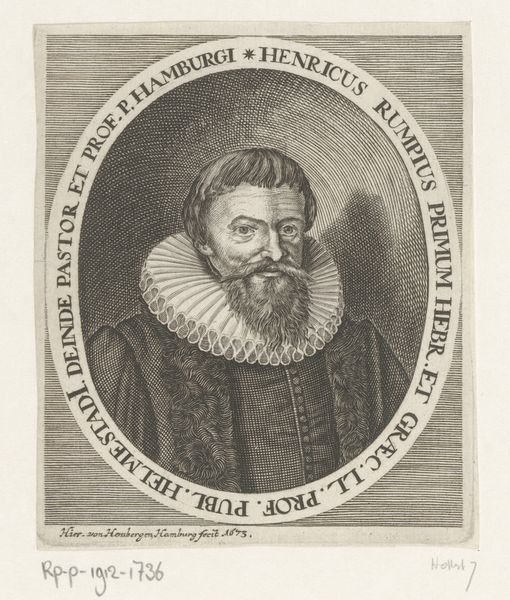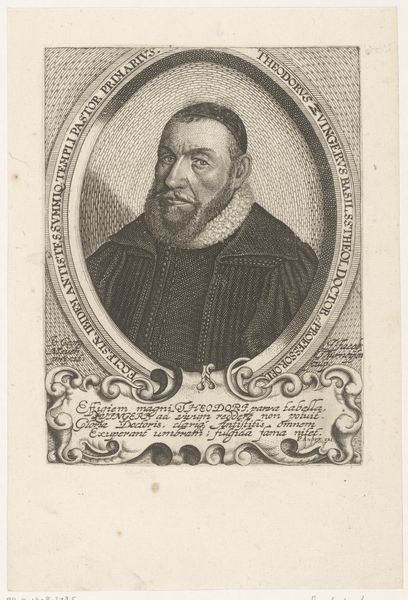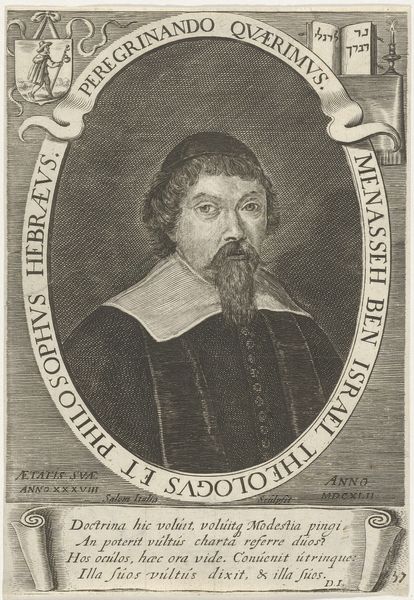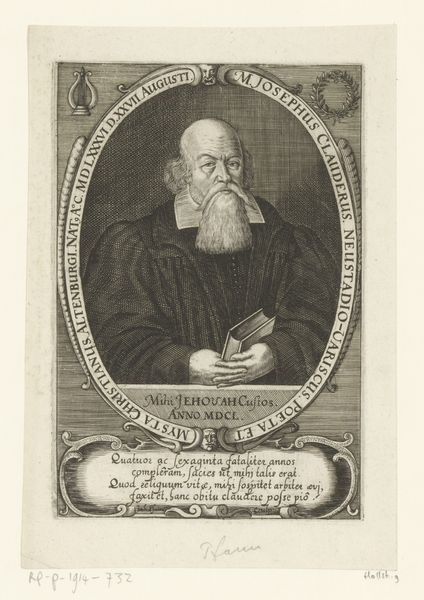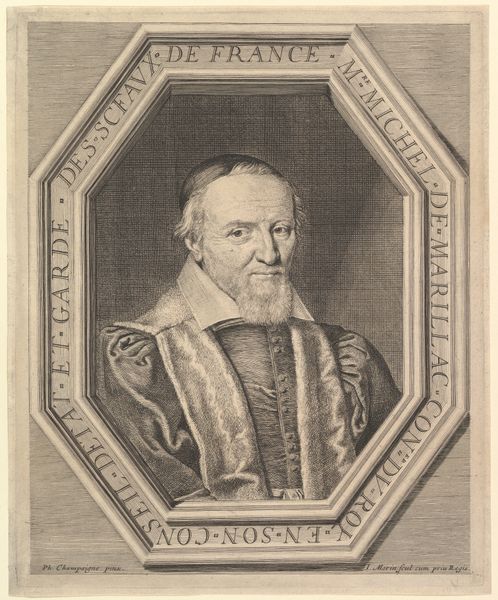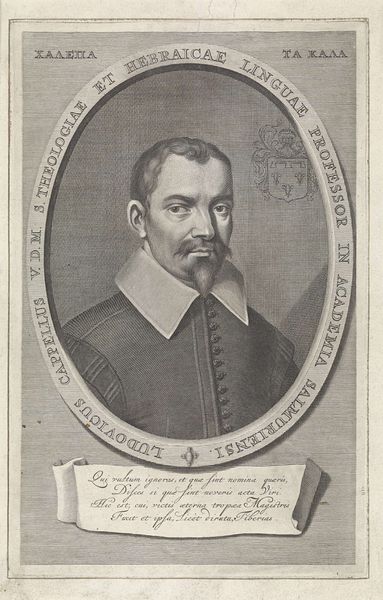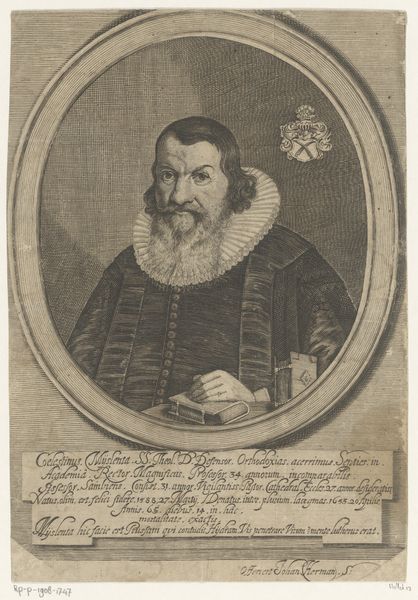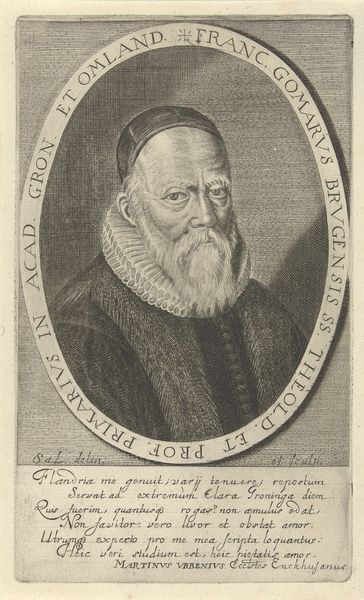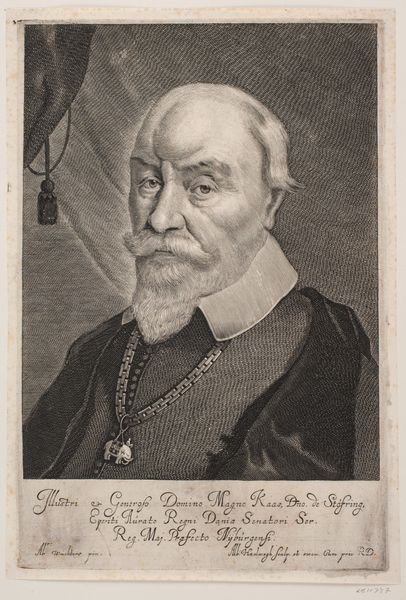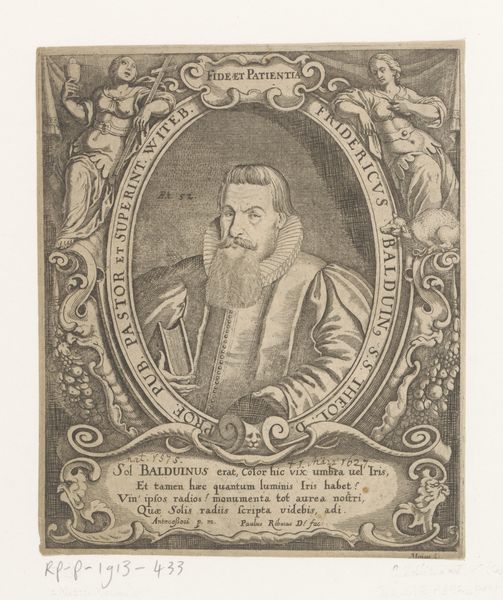
drawing, print, metal, engraving
#
portrait
#
drawing
#
baroque
# print
#
metal
#
old engraving style
#
engraving
Dimensions: height 198 mm, width 131 mm
Copyright: Rijks Museum: Open Domain
Curator: Lucas Kilian rendered this engraving of David Koch in 1606. The print, currently held at the Rijksmuseum, captures the subject at 63 years old. Editor: What a striking presence. It exudes a sense of authority, yet the somber tones hint at vulnerability beneath the surface. Curator: Indeed. Consider Kilian's meticulous use of engraving techniques. Look at the density of lines defining the subject’s garments— the sheer labor that went into conveying that weight and texture. Each stroke, each decision about the density of the engraving, reflects a mastery of the medium and an understanding of material processes in printmaking at the time. Editor: It's fascinating how Koch is positioned within the oval frame, almost as though contained and put on display for viewers of the period. His clothing and bearing speak volumes, communicating elite status within a highly stratified society. I am compelled to ask questions about the systems and practices through which power operates to define his status, along axes such as gender and class, as visible signs in clothing. Curator: That gilded chain certainly communicates wealth. And what about the context in which it was produced? What metal went into its production, where was it produced, what were the exploitative or supportive relations involved, what forms of economic organization did the material demand? This engraving served, in part, as a marker of prestige and a consumable object reflecting status. The raw materials, and labor itself are encoded within it. Editor: Precisely. It underscores how individuals like Koch, embedded within religious and political systems, actively shaped and maintained social hierarchies through patronage and representation. We must critically examine not only who is being memorialized, but the socio-economic implications such works project through history and into our contemporary understanding of cultural elitism. Curator: A fitting point, considering the layers of skill and commerce baked into each plate. Each pull requires resources that reach far beyond the aesthetic and into systems of production and exchange that would be good to investigate further. Editor: It leaves me thinking about how such depictions play a role in larger conversations about representation, agency, and whose narratives are being preserved through art history. Curator: Agreed. It underscores the crucial roles that prints can have in solidifying hierarchies while simultaneously enabling the dissemination of images that extend the conversation.
Comments
No comments
Be the first to comment and join the conversation on the ultimate creative platform.
